Beginning of the Gandhian Era
Beginning of the Gandhian Era and non-cooperation movement: During the war years, 1914-18, nationalism had gathered its forces and the nationalist were expecting major political games after the war; and they were willing to fight back if their expectations were not met. The economic situation in the post-war years had taken a turn for the worse. Indian industries, which had prospers during the War because of foreign imports of manufactured goods, now faces loss and closure. The Indian industrialists wanted protection of their industries through imposition of high custom duties and grant of government aid; they realised that stronger nationalist movement and an independent Indian Government alone could secure these.
The workers, facing unemployment and the high prices and living in great poverty, also termed actively towards the nationalist movement.
The international situation was also favourable towards the nationalism. In order to win popular support for there was apart, the Allied nations-Britain, the United States, France, Italy and Japan promised a new era of democracy and national self determination to all the peoples of the world. But after their victory, they showed little willingness to the end of the British rule.
The government was aware of the rising tide of nationalist and anti-government sentiments, once again decided to follow the policy of concessions and repressions.
| Importance Of The Year 1919 |
|---|
- The year 1919 constitutes an important landmark in the history of British India.
- The Rowlatt Bills and the reign of terror in Punjab culminated in Jallianwala Bagh Massacre.
- The emergence of M. K. Gandhi
- Development Pan-Islamism as a force of Indian politics.
- The passing of Government of India Act, 1919 on the basis of Montagu-Chelmsford Report.
|
Gandhi's Early Life and Ideas

MohanDas Karamchand Gandhi (M.K. Gandhi) was born on October 2, 1869 at Porbandar in Saurashtra (Gujrat) in a well-to-do family. He proceeded to England in 1888, and returned to India as Barrister-at-law in 1891. He failed as a practising lawyer both at Rajkot and in Bombay. In 1893, he proceeded to Natal in South Africa as a layer of a firm of Porbander Muslims. There, he was deeply shocked by the political and social disabilities which were imposed by law, administrative and social measures of the Europeans upon the Indian residents. He founded a political association know as the Natal Indian Congress and also a newspaper called Indian Opinion with a view to educating Indians in political matters and giving publicity to their grievances.
He revolted against the racial injustice, discrimination and degradation to which Indians had to submit in the South African colonies. Indian labourers in South Africa and the Indian merchants were denied the right to vote. Gandhiji is soon resumed the leadership of the struggle against these conditions and during 1893-1914 was engaged in a struggle against the racist authorities of South Africa. It was during the struggle that he evolved the technique of Satyagaraha Best on truth and nonviolence.
The ideal Satyagarhi was to be truthful and peaceful, but at the same time he would refuse to submit what he considered wrong. He would accept suffering willingly in the course of struggle against the wrong doer. Even while resisting evil, he would love the evil-doer. He would be utterly fearless. According to Gandhiji, nonviolence was not a whipper of the week and the cowardly. Only the strong and brave could act if it.
Another important feature of Gandhiji's outlook was that he would not separate thought and practice, belief and action. His truth and nonviolence were meant for daily living and not merely for the high sounding speeches and writings.
Though a devout Hindu, Gandhiji's cultural and religious outlook was universalist and not narrow. He wanted Indians to have deep roots in their own culture but at the same time to acquire the best that other world cultures had to offer.
| Gandhiji In Africa |
|---|
- Gandhiji reached Durban in 1893 to sort out the legal problems of Dada Abdullah, a Gujarati merchant, becoming the first highly educated Indian to have come South Africa.
- He setup the Notable Indian Congress and started a paper called Indian Opinion
- He used passive resistance or civil disobedience or Satyagraha for the first time against the legislation making it compulsory for Indians living in South Africa to take out certificates of registration which have their fingerprints.
- In 1906, his setup the Tolstoy Farm in Transvaal with the help of his German architect friend, Kallenbach, to house the families of the Satyagrahis.
- He led a struggle against a judgement of South Africa Supreme Court which invalidated all marriages work under according to christian rites and registered by the registrar of marriages.
- in 1909, Gandhiji released his book Hindu Swaraj. The Gandhian ideas are illustrated in this book.
|
Gandhiji Returns to India: Gandhiji returned to India in January 1915 at the age of 46. For one year, he travelled all over India, understanding Indian conditions and the Indian people and then in 1916 founded the Sabarmati Ashram at Ahmedabad. He also set out to experiment with his new method of struggle.
Gandhiji in Champaran Ahmedabad and Kheda
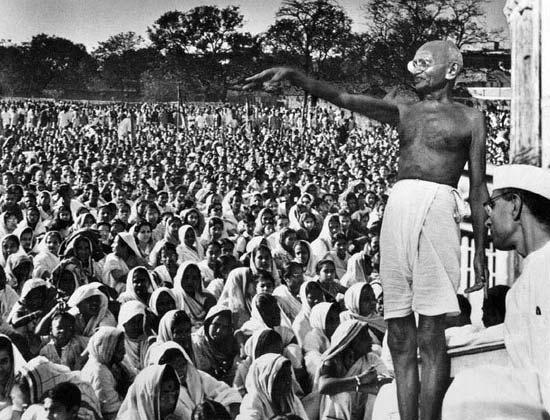
Gandhiji in Champaran Ahmedabad and Kheda: Champaran Satyagraha: Gandhiji's first great experiment in Satyagraha came in 1917, in Champaran, in Bihar. European planters had involved the cultivators of Champaran in agreements that forced them to cultivate indigo on 3/20th of their holdings (known as the tinkathia system). Towards the end of the 19th century, German synthetic dyes forced indigo up of the MARKETand the European planters of Champaran, keen to release the cultivators from the obligation of cultivating indigo, tried to turn their necessity to their advantage by securing enhancement in rent and other illegal dues as a price for the release. The resistance had surfaced in 1908 as well, but the exaction of the planters continued till Raj Kumar Shukla, a local man, decided to follow Gandhiji all over the country to pursued him to come to the Champaran to investigate the problem.
Accompanied by Babu Rajendra Prasad, Mazharul-Huq, J.B. Kripalani, and Mahadev Desai Gandhiji reached Champaran in 1917 Ford conducting a detailed enquiry into the condition of the peasantry. The infuriated district officials ordered him to leave Champaran, but he rejected the order and was willing to face trial and imprisonment. This forced the Government to cancel its earlier order and to appoint a committee of enquiry on which Gandhiji served as a member. Ultimately, the disabilities from which the peasantry was suffering were reduced and Gandhiji had won his first battle of civil disobedience in India.
Ahmedabad Mill Strike : The next scene of Gandhiji's activity was in 1918 at Ahmedabad where an agitation had been going on between the labourers and the owners of a cotton textile mill for an increase of pay. While Gandhiji was negotiating with the millowners, he advised the workers to go on strike and to demand 35% increase in wages. Having advised the strikers to depend upon their conscience, Gandhiji himself went on a "fast unto death" to strengthen the workers resolved to continue the strike. The mill owners gave away and a settlement was reached after 21 days of strike. The millowners agreed to submit the whole issue to a tribunal. The strike was withdrawn and retrieval later awarded the 35% increase that the workers had demanded. Ambalal Sarabhai's sister, Anasuya Behn, was one of the main lieutenants of Gandhiji in this struggle in which her brother and Gandhiji's friend was one of the main advisories.
Kheda Satyagraha: in 1918, Gandhiji learned that the peasants of Kheda district in Gujarat were in extreme distress due to the failure of crops, and that their appeals for the remission of land revenue were being ignored by the government. As the crops were less than one fourth of the normal yield, the peasants were entitled under the revenue code to a total remission of the land revenue. Gandhiji organised Satyagraha and asked the cultivators not to pay land revenue till their demand for remission was met. The struggle was withdrawn, when the government issued instructions that revenue should be recovered only from those peasants who could afford to pay. Sardar Vallabhbhai Patel was one of the many young persons who became Gandhiji's follower during the Kheda peasant struggle.
Montagu-Chelmsford Reform
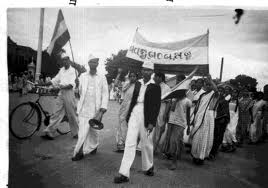
Montagu-Chelmsford Reform and Government of India Act, 1919: In 1918, Edwin Montagu, the Secretary of State, and Lord Chelmsford, the Viceroy, produced their scheme of constitutional reforms. These reforms, popularly known as Montagu-Chelmsford Reforms, led to the enactment of Government of India Act of 1919 Silent features of the act are as follows:
Rowlatt Satyagraha
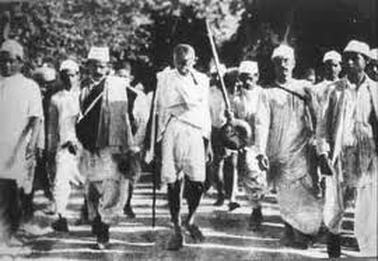
Rowlatt Satyagraha: In March 1919, the government passed the Rawlatt Act even though every single Indian member of the Central Legislature Council opposed it. This act authorised the government to imprison and a person without trial and conviction Endicott of law. The Act, thus, severly curtailed the civil liberties of Indians in the name of curbing terrorist violence.
Gandhiji suggested that a Satyagraha to be launched against the Rowlatt Act. A Satyagraha Sabha was formed in 1919. 6 April was fixed as the date on which Satyagraha would be launched. Delhi observed the hartal want hotkey at March because of some confusion about dates.
Gandhiji was arrested on April 9, 1919, but was set free. The news of his arrest provoked serious disturbances in Bombay, Ahmedabad, Nadiad and elsewhere. Ghandhi decided to suspend non-violent civil disobedience as he felt that the people were not yet fit for the moment. The Rowlatt Satyagraha as a political campaign was a failure as it did not attain its objective of the repeal of the Rowlatt Act.
Jallianwala Bagh Tragedy
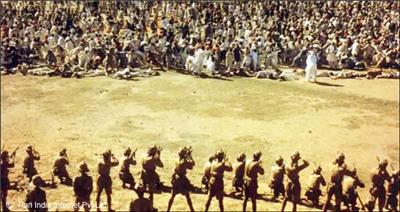
Jallianwala Bagh Tragedy: In protest to the Rowlatt Act, Amritsar observed hartal peacefully both on 30th March and sixth of April 1919. The government decided to made the popular protest with repression. On April 10, 1919, Dr Satyapala and Dr Kitchlew, two popular leader of the province, were deported from Amritsar. On the same day a peacful procession at Amritsar was fired upon. Thereupon, the people committed acts of arson and assulted a few Europeans.
On 12 April, 1919, the proclamation was issued by General Dyer, who had taken charge of troops the day before, that no meetings or gathering of the people were to be held. However, no steps were taken to see the proclamation was brought to the notice of the people. The result was, public meeting was announced for 13 April, 1919 at 4:30 PM in Jallinwalla Bagh. Neither General Dyer nor other authorities to connection to stop the meeting. The meeting started at right time and there were about 6,000 to 10,000 people present in the meeting. Without giving any warning to the people to disperse, Gen Dyer ordered the troops to fire. The firing continued until the whole of the ammunition at the disposal of the troops exhausted. Officially 379 people were killed.
The Jallianwala tragedy had a lasting impact on succedding generations. Rabindranath Tagore renounced his Knighthood as a measure of protest. Ghandhiji returned the Kaisar-i-Hind medal given to him for his work during the Boer War. C.F. Andrews, a friend of Tagore, Mahatma Gandhi and the Nehrus, wrote to Mahadev Desai after a visit to Amritsar, "It was a massacre, a butchery."
Hunter Committe: The Jallianwala Bagh massacre provoked a strong public reaction in India and England. The Government pointed a Committee of Enquiry (consisting of four British entry Indian members) under the chairmanship of Lord Hunter to enquire into the Punjab disturbances. The Indian National Congress decided to boycott the Hunter Community and appointed the nonofficial committee consisting of popular lawyers, including Motilal Nehru, CR Das, Abbas Tyabji, MR Jayakar and Ghandhiji. Before the Hunter Committee began its proceeding, the government passed an Indemnity ACt for the protection of its officers. The "white washing bill" as the Indemnity Act was called, was severly criticised by Motilal.
Khilaft Movement
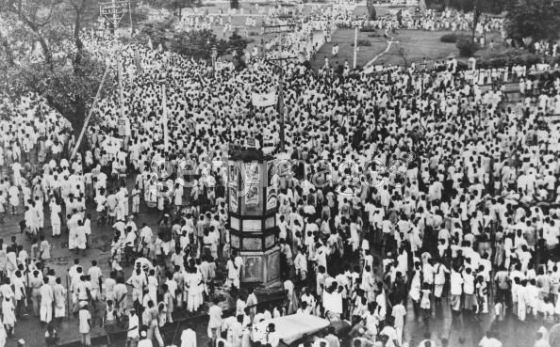
Khilaft Movement: The Indian Muslims were incensed when they discovered that their loyality had been purchased during the War by assurances of generous treatment of Turkey after the war- a promise British statesman had no intension of fulfilling. The Muslims like the Ali brothers, Muhammad Ali Hasrat Mohani and Shaukat Ali and Maulana, Abul Kalam Azad had organised a Khilafat party.
Gandhiji decided to extend their support to the Khilafat movement as this was to him and apportion duty of uniting the Hindu and Muslim. October 17, 1919 was observed as Khilafat Day when the Hindu united with Muslims in fasting and observed a hartal on tht day. Gandhiji was elected President of the All-India Khilafat Conference which met at Delhi on November 23, 1919. They decided to withdraw all cooperation from the government if their demands were not met.
| Khilafat Issue |
|---|
|
During the First World War, Turkey was allied with Germany and Austria against the British. The Indian Muslims regarded the Sultan of Turkey as their spiritual leader, Khalifa, so naturally theysympathized with Turkey. After the four, the British removed the Khalifa from power and fragmented Turkey. Hence, the Muslims started the Khalifat movement in India for the restoration of the Khalifa's position. The main demand was - Khalifa's control should be retained over the Muslim scared places.
The Khilafat movement lost its relevance after Mustafa Kamal Pasha abolished Khilafat and made Turkey a secular state in 1922.
|
Non-cooperation movement

Non-cooperation movement : The non-cooperation Movement was firmly launched on 1 August, 1920. Tilak passed away in the early hours of 1 August, and the day of mourning and of launching of the movement merged as people all over the country observed hartal and took out processions. When the Congress met in SPECIAL session at Calcutta on September 4, 1920, Gandhiji faced some opposition from vetern leaders. He emphasised the fact that by the adoption of these non-cooperation resolution Swaraj might be retained within one year. The main opposition, led by CR DAs was to the boycott of legislative council, elections to which were to be held very soon. They believed that it was folly to boycott the new Councils, thereby cutting themselves off from the fountainhead of political power.
Features and spread of the non-cooperation movement : It was the first mass based political movement under Gandhiji. The main emphasis of the movement was on boycott of schools, colleges, law courts and advocacy of the use of Charkha. There was widespread student unrest and top Lawyer like CR Das and Motilal Nehru gave up their legal practice. Thereafter, the stress was on boycott of foreign cloth and boycott of the forthcoming visit of the Prince of Wales in November, 1921; popularization of Charkha and Khadi and Jail Bharo by Congress volunteers.
| Significance Of The Non-Corporation Movement |
|---|
| The Non-Corporation Movement was of great historical importance because: |
- It converted the National Movement into a mass movement
- It used unique methods hitherto unparalleled in the annals of history:
- It cut across religious and caste lines and bound the nation in a common bond
- It futher strengthened the Hindu-Muslim unity
- The Indian masses displayed immense courage and spirit of sacrifice
- It gave political training to thousands of people who in later movements came to the forefront.
|
You May Be Interested IN